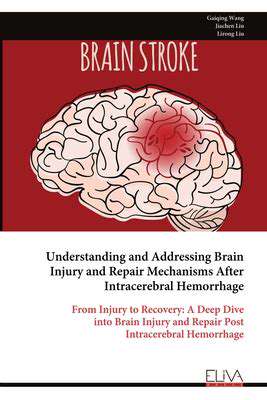An OverviewImagine your brain experiencing a sudden electrical storm - that's essentially what cortical spreading depression (CSD) represents. This remarkable neurological event involves a slow-moving wave of intense neuronal activation followed by prolonged silence across brain tissue. Unlike normal brain activity patterns, CSD creates a dramatic shift in cellular chemistry that can temporarily disrupt normal brain function for minutes to hours.
What makes CSD particularly intriguing to neuroscientists is its dual nature - both protective and potentially harmful. While it may represent the brain's emergency response to injury, this same mechanism appears involved in migraine aura and may worsen outcomes after strokes. The medical community continues debating whether CSD should be viewed as the brain's last-ditch survival mechanism or a pathological process needing suppression.
Mechanism of CSD
The cellular ballet behind CSD involves an intricate choreography between neurons and their supporting cells. When triggered, neurons dump potassium into their surroundings like sailors lightening a sinking ship. This ionic imbalance creates a domino effect - each depolarized neuron forces its neighbors to follow suit. Meanwhile, astrocytes (the brain's helper cells) amplify the wave by releasing inflammatory molecules and redistributing ions.
Recent studies reveal an unexpected twist - the brain's blood vessels constrict during CSD, creating an inverse steal phenomenon. This vascular response may explain why some migraine sufferers experience visual disturbances before headache onset. The temporary oxygen deprivation could serve as an early warning system for impending neurological distress.
Clinical Significance
CSD's fingerprints appear in surprisingly diverse neurological conditions. Beyond its established role in migraine aura, researchers find similar depolarization waves in:
- Acute stroke patients (correlating with worsening symptoms)
- Epilepsy surgery patients (preceding seizure activity)
- Traumatic brain injury cases (predicting tissue damage)
Perhaps most remarkably, CSD waves have been measured slowly marching through injured brain tissue for days after the initial trauma. This prolonged activity suggests CSD might represent both consequence and cause of neurological damage - a vicious cycle needing therapeutic interruption.
Diagnosis and Detection
Detecting CSD in living patients remains challenging but technological advances are helping. Modern approaches include:
- High-density EEG arrays capturing the wave's electrical signature
- Advanced MRI sequences tracking metabolic changes
- Novel optical techniques visualizing blood flow alterations
These tools are revealing that CSD may occur more frequently than previously suspected, particularly in critical care neurology patients.
Treatment and Prevention
Current CSD management strategies focus on breaking the cycle at different points:
| Approach | Example Interventions |
|---|
| Ionic stabilization | Magnesium infusion, ketamine |
| Vascular modulation | CGRP antagonists, nimodipine |
| Metabolic support | Hyperoxygenation, ketogenic diet |
The most promising frontier involves developing CSD biomarkers to identify at-risk patients before irreversible damage occurs. Such predictive tools could revolutionize acute neurology by enabling preemptive treatment of secondary brain injury.
CSD Mechanisms: A Deep Dive into the Brain's Response

CSD Mechanisms: Understanding the Fundamentals
The brain's response to CSD resembles a carefully orchestrated emergency protocol. When the depolarization wave hits, neurons undergo dramatic changes:
- Complete electrical silence lasting minutes
- Massive energy depletion as pumps work overtime
- Structural changes in dendritic spines
What fascinates researchers most is how this temporary shutdown may actually represent an ancient neuroprotective mechanism. By voluntarily going offline, neurons might prevent more catastrophic excitotoxic damage - like circuit breakers tripping to prevent electrical fires. This evolutionary perspective suggests CSD could be the brain's version of turning it off and on again when facing overwhelming stress.
Key Players in CSD Mechanisms
The molecular cast behind CSD reads like a who's who of brain chemistry:
- Glutamate: The spark that ignites the depolarization cascade
- Aquaporin-4: Water channels enabling cytotoxic edema
- Pannexin-1: Membrane pores releasing danger signals
Recent research highlights an unexpected protagonist - the glymphatic system. This brain waste-clearance network becomes hyperactive during CSD, potentially explaining why some patients report cognitive resets after migraine episodes. The depolarization wave might force a deep cleaning of neural networks.
Acupuncture, the traditional Chinese healing art, has demonstrated encouraging results for better sleep. By inserting thin needles at specific body points, this practice aims to balance your energy flow (called Qi) and create internal harmony. This process may help reduce stress and anxiety, two common obstacles to good sleep. Research indicates acupuncture might help regulate your natural sleep cycle, leading to deeper, more refreshing sleep.
Beyond the Aura: CSD's Potential Role in Other Neurological Conditions
Exploring the Potential of CSD in Epilepsy
The CSD-epilepsy connection presents a neurological paradox. While CSD typically suppresses neuronal activity, it can lower seizure thresholds in surrounding tissue. This creates a dangerous situation where:
- The depressed core becomes electrically silent
- The surrounding penumbra becomes hyperexcitable
- Seizures may erupt at the wave's trailing edge
This phenomenon helps explain why some epilepsy patients experience worsening seizures after head trauma or stroke - events known to trigger CSD.
CSD's Implications for Stroke Recovery
In stroke patients, CSD waves behave like aftershocks following an earthquake:
| Time Post-Stroke | CSD Characteristics |
|---|
| 0-24 hours | Frequent, large amplitude waves |
| 24-72 hours | Decreasing frequency |
| >72 hours | Rare, localized events |
Monitoring these brain aftershocks might help predict recovery potential and guide rehabilitation timing. Some centers now use CSD frequency as a biomarker for deciding when to initiate aggressive therapies.
Future Directions and Research Opportunities

Exploring Novel Applications of AI in Healthcare
The next frontier in CSD research involves artificial intelligence applications such as:
- Machine learning algorithms predicting CSD susceptibility
- Real-time EEG analysis detecting early wave formation
- Personalized treatment algorithms based on CSD patterns
These technological advances could transform CSD from a laboratory curiosity into a clinical treatment target within the next decade. The challenge lies in developing systems that can interpret complex neurological data while accounting for individual patient variability.
Advancements in Drug Discovery and Development
Emerging CSD-targeted therapies focus on:
- TRP channel modulators to stabilize neuronal membranes
- Neurosteroids enhancing endogenous protection
- Mitochondrial protectants preserving energy metabolism
The most promising approach may involve CSD cocktails combining agents targeting different phases of the depolarization cascade.
Disclaimer: All articles on this site are original, please do not reprint

